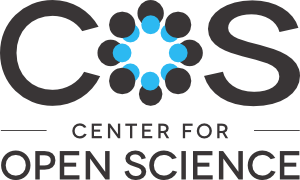Location
Our mission is to increase openness, integrity, and reproducibility of research.
These are core values of scholarship and practicing them is presumed to increase the efficiency of acquiring knowledge.
For COS to achieve our mission, we must drive change in the culture and incentives that drive researchers’ behavior, the infrastructure that supports their research, and the business models that dominate scholarly communication.
This culture change requires simultaneous movement by funders, institutions, researchers, and service providers across national and disciplinary boundaries. Despite this, the vision is achievable because openness, integrity, and reproducibility are shared values, the technological capacity is available, and alternative sustainable business models exist.
COS's philosophy and motivation is summarized in its strategic plan and in scholarly articles outlining a vision of scientific utopia for research communication and research practices.
Because of our generous funders and outstanding partners, we are able to produce entirely free and open-source products and services. Use the header above to explore the team, services, and communities that make COS possible and productive.
Members:
Resources
Displaying 416 - 420 of 447MODELING THE EFFECTS OF PASTURE EXPANSION ON EMISSIONS FROM LAND-USE CHANGE
We present a global agricultural greenhouse gas model that assesses emissions from land-use change. In addition to evaluating shifts in and out of crop production, we develop a pasture model to assess extensification and intensification of global livestock production based on herd size and stocking rate. We apply the model to a scenario that introduces a tax on me-thane emissions from cattle in the United States. The resulting expansion of pasture in the rest of the world leads to substantially higher emissions than without the tax.
The Role of Small Farms in Structural Change
This paper explains regionally differentiated patterns of structural change based on a theoretical framework dealing with strategic interaction of farms on the land market. The main research question focuses on the causes of regionally persistent structures. An empirical Markov chain model is defined for the West German agricultural sector. Thereby it is possible to explain the probabilities of farm growth, decline or exit in terms of the current and former regional farm size structure.
The Economics of Land Consolidation in Family Farms of Moldova
The paper investigates the current situation with fragmentation of family farms in Moldova and its effects on family well-being and farm productivity. A key hypothesis is that consolidation of agricultural land in Moldova has beneficial effects in terms of productivity and is desirable in the long run. We examine the case for market-driven land consolidation using data from several recent surveys in Moldova. We show that, in the individual sector, larger farms consume less of their output and attain higher levels of commercialization.
The Choice of Land Tenure Contracts in the Presence of Transaction Costs in Rice Farming in West Java, Indonesia.
This study assessed the preference for and efficiency of land tenure contract arrangements in rice farming in West Java, Indonesia. Specifically, it examined the transaction costs associated with land tenure contracts, the land tenure contract preference, the efficiency of land tenure contracts, and the policy agenda to address the problems of land tenure efficiency. Three types of land tenure contracts were considered: sharecropping, fixed rental and mortgage.
Modelling the mitigation mix: faecal microbes, economic constraints and sustainable land management
Conventional livestock farming provides consumers with cheap and reliable sources of milk and meat. Yet the inevitable by-product, i.e. livestock faecal matter, represents a potential source of pathogenic microorganisms. This paper applies the Faecal Indicator Organisms Costing Assessment Tool (FIOCAT), which was designed as part of the RELU project ‘sustainable and holistic food chains for recycling livestock waste to land’, to examine the costs associated with mitigation methods that may inhibit pathogenic transfers to water.


